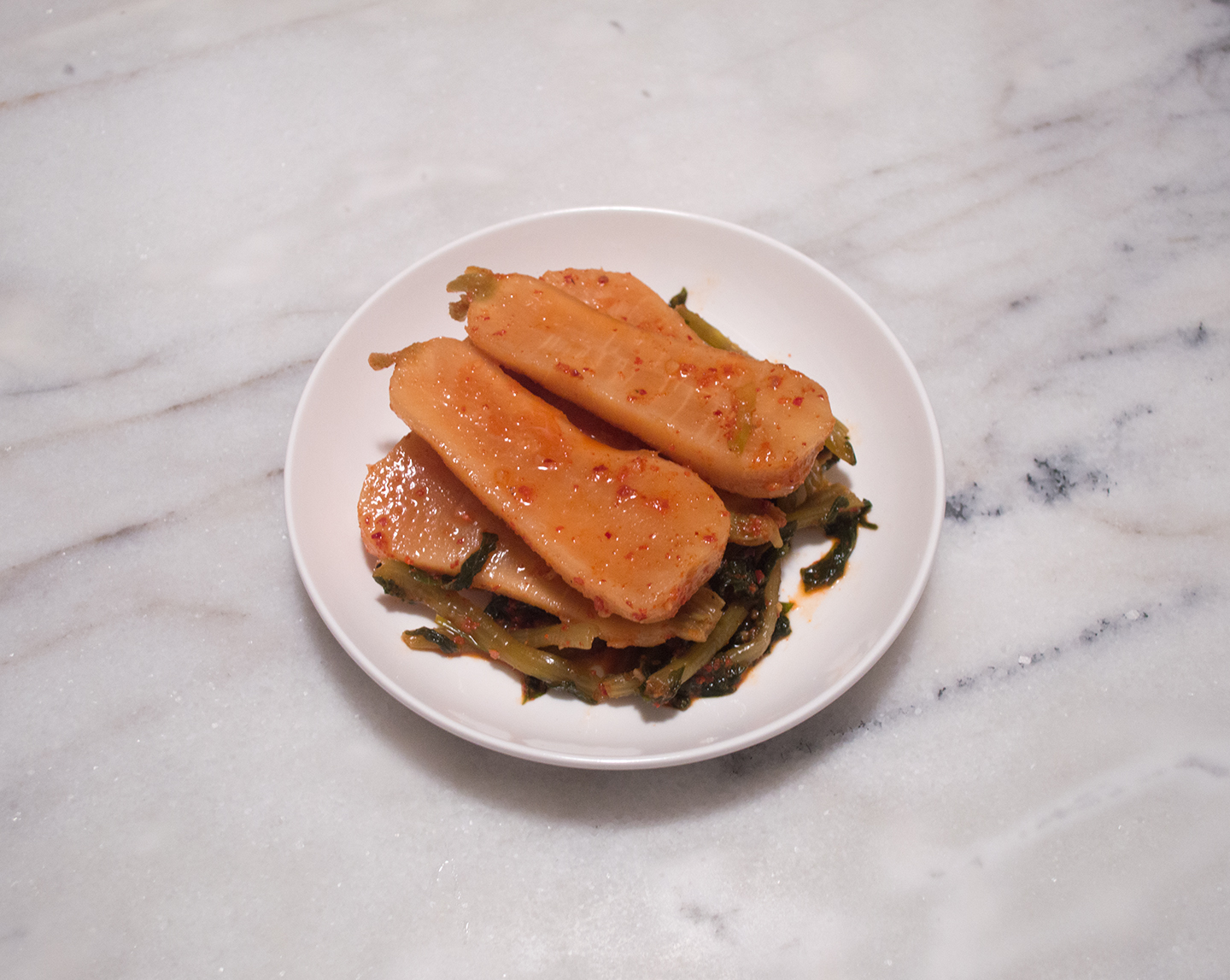
Chonggak kimchi (총각 – bachelor; 김치 – kimchi) stems (haha, sorry) from the days when unmarried boys grew their hair long and wore it in a braid. When boys came into adulthood, their hair were brought up into topknots. These topknots looked a lot like these radishes, and their green shoots looked like pony tails, so the name stuck!
Koreans also know this radish as altari mu (알타리무), and we eat the roots *and* the greens. I might have said it before that kkakdugi is my favorite radish kimchi to eat, but I *love* chonggak kimchi even more! I think I just really love the crunch these radishes have, and most of the time, they don’t have the harsh heat that often comes with radishes.
My mom would make this kimchi for me all the time when I was growing up. She would be concerned that I wouldn’t be able to bite down on a whole radish, so she would take a few from the jar and slice them into smaller cubes. She never deterred me from enjoying grown-up food, and encouraged me to eat whatever I wanted; however, honestly? I think I was a very curious kid that wanted to try everything!
Thanks, mom, for feeding me yummy food, and helping me out with this recipe!
Recipe for Chonggak Kimchi (총각 김치) - Ponytail Radish Kimchi
- About 2 Liters of Radish Kimchi
- Preparation:
- Cooking:
- Waiting:
Ingredients
- 40g (4T) Mochiko (Sweet Rice Flour)
- 240ml (1 cup) Water
- 8-10 Chonggak Radish with Greens
- 45-60g (3-4T) Coarse Sea Salt, plus more if necessary
- 3 large Scallions
- 15g (1½T) Garlic, minced
- 6g (1T) Ginger, minced
- 5g (1t) Fish Sauce
- 10g (½T) Salted Shrimp (Saeu Jeot)
- 35g (¼-cup, plus 2T) Red Pepper Flakes
- 12g (1T) Granulated Sugar
Procedure
- Put the Mochiko into a small saucepan with 120g (½-cup) of water. Stir with a spatula and let it sit for 10-15 minutes.
- Once the flour looks hydrated, place it over a low-medium flame. Stir constantly while cooking. As it begins to thicken, lower the flame. Slowly add the rest of the 120g (½-cup) of water, about 30g (2T) at a time, making sure the water is well incorporated before adding more.
- Continue stirring on a low flame. The rice mixture will thicken and become translucent. Stir for another minute.
- Turn off the heat and set aside to cool to room temperature.
- Scrape or peel the radishes clean, wash them very well, and drain. Remove the green shoots and slice them into 3-inch lengths, taking care to discard any browned or wilted sections. Bisect the radishes. Salt them, shoots and radishes together, in a large bowl. Set aside for 1-1½ hours, flipping the radishes once from top to bottom.
- Wash the scallions, remove the roots, and cut them into lengths of 1½ inches. In a small bowl add the cut scallions, garlic, ginger, fish sauce, salted shrimp, red pepper flakes, and sugar. Once the rice paste has cooled, add the paste in with the seasoning, and mix well.
- After brining the radishes, rinse, drain, then mix with the seasoning.
- Place the chonggak kimchi into a 3-liter container. Seal the container and set it in a cool area on the kitchen counter.
- After 2-3 days, place the container into the refrigerator. Your kimchi should be ready to eat in about 1-2 weeks.
*Bunny Wisdom*
- Hydrating any kind of fine powder (like rice flour) requires a little bit of patience. The resting period allows the dry ingredient to absorb the water, preventing large flour pockets.
- Take care to lower the heat if the mixture seems to be thickening faster than it is possible for you to incorporate the rest of the water.
- The continuous stirring prevents sticking and burning on the bottom of the saucepan.
- You will notice the mixture will go from opaque to translucent. Simmer for a minute, stirring and watching slow bubbles surface like the Bubbling Mud Pots of Yellowstone National Park. You don't want it to be boiling.
- I scrape the radishes with a paring knife right at the point where the shoots meet the root, and make my way down the radish. These guys are notorious for being grubby and sandy, so wash them well.
- There are a few ways you can prepare these radishes: if they are small enough, you can leave them whole. If they look a bit big (like the ones I have in the photos), slice them in half, or quarter them before salting. You also do not have to cut the shoots off; leave them long, and after seasoning the chonggak kimchi, wind the greens around the root before placing them in the container. Yes, this might mean that you'll have bisected radishes still connected at the shoots. That's okay!
- I chose to slice the shoots into segments to make it easier to eat. Again, how you prepare it is up to you.
- Taste-test the salted radish by taking a paring knife and slicing off a piece. See if it needs to sit in salt for longer. Often times 1½ hours is enough. If you find that the radish isn't sufficiently brined (salty throughout), leave it for another 30 minutes, or add salt/fish sauce/salted shrimp to the seasoning.
- Your final product might only be a total of 2 liters, but I like to give the kimchi some space to breathe. If you have a container that is around 2½ liters, that should work well. I make sure the radishes are stacked like Lincoln logs inside the container, so there aren't major air gaps. Keep the radish and seasoning levels the same; we want the radishes to be completely coated in seasoning.
- These radishes are perfect to eat by the second week of maturing, and are even better by the third week. If they begin to get too funky for your taste, make some Kimchi Jjigae with it!
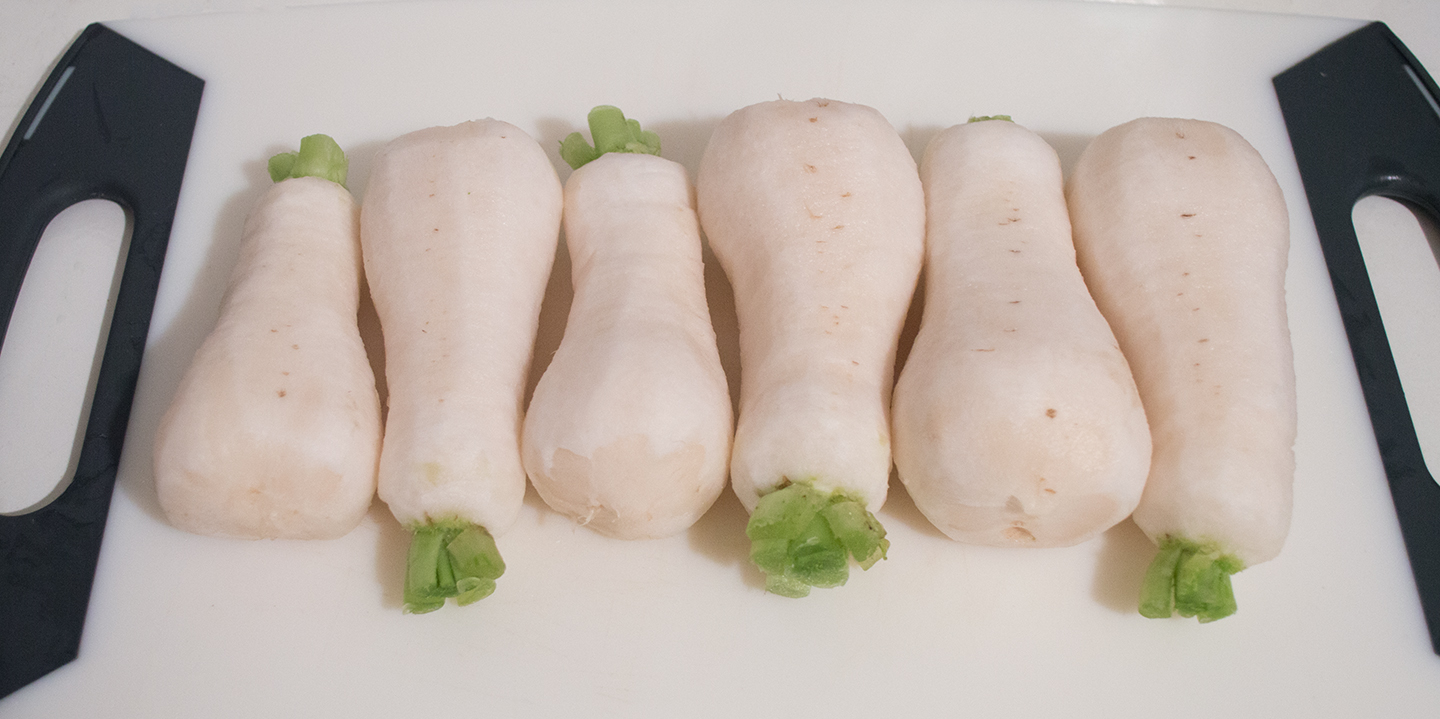
**Here are some of the ingredients I use for this recipe. Please, feel free to browse and ask questions on anything you see listed below.**

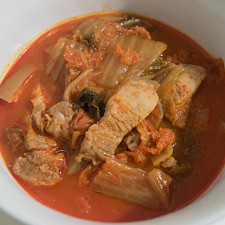
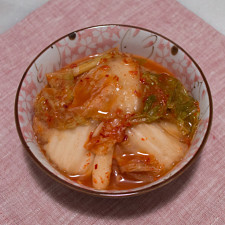

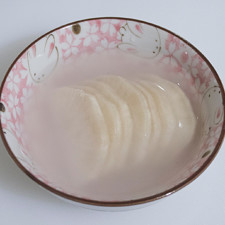
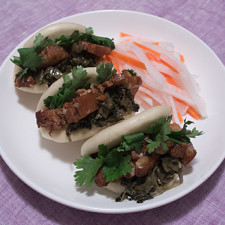
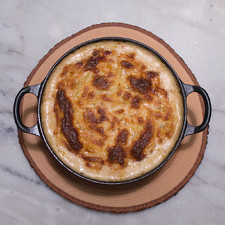
No thoughts on "Chonggak Kimchi (총각 김치) – Ponytail Radish Kimchi Recipe."